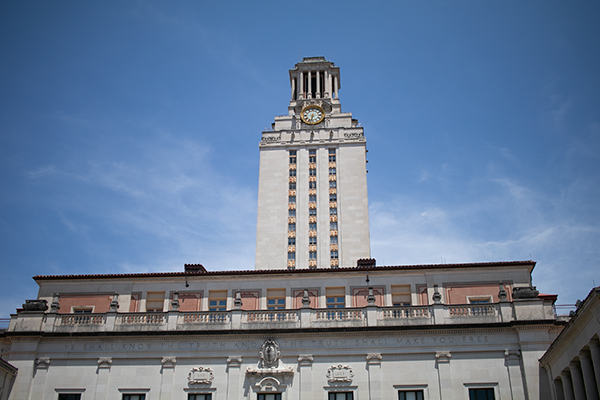UT reinitiates partnership with Texas A&M, US Army to develop remote warfare technology
July 19, 2021
Editor’s Note: This article first appeared as part of the July 12 flipbook.
UT restarted its partnership with Texas A&M to build computer-operated vehicles and machinery, which it will send to the U.S. Army to test for use in combat.
The partnership between the universities started in 2019, but they delayed work on the project due to COVID-19. Both universities, as well as Army Futures Command, an organization dedicated to modernizing the Army, reinitiated project conversations in June, but one UT activist calls for better oversight on how the technology is used.
Patrick Seiber, public relations director for the Bush Combat Development Complex, said the project focuses on robotics and will aim to help the Army engage in battle remotely, with development and testing expected to be completed by this fall.
“We both have testing capabilities, but one thing that UT has is dynamic urban environments. For example, this summer we’re building some robots that are going to be wandering around campus doing surveys and being able to use these systems in dynamic urban environments is important,” said Mitch Pryor, mechanical engineering lecturer with expertise in field and service robotics.
However, senior Roshan Khan, who is one of the founding members of the Women for Weapons Trade Transparency, said she does not believe that investing money in military weaponization will help minimize harm to people.
“Of course I don’t want soldiers to be injured,” Khan said. “But rather than replacing soldiers with autonomous weapons, it would be preferable to reduce the need for soldiers to be deployed in the first place or for any conflict to occur.”
Khan, a Plan II, government, international relations and global studies, Asian cultures and languages and economics major, said University leadership should develop a system to track the technology when it goes out of the campus and to various military organizations. She said many members of the University may disagree with how the weapons are being used.
“I think that it doesn’t reflect very well on the University’s leadership that they have invested so much money into a high-tech laboratory to serve the military when there are a lot of student needs not met like housing and dining, curriculum and much more,” Khan said.
Development of the technology will be done at UT, but the project will be tested at the Texas A&M RELLIS Campus, a research and testing facility. After research and testing is complete, the technology will be sent to Army Futures Command, who will incorporate it into the U.S. Army.
Seiber said that A&M received $50 million from the state government to establish the testing grounds for the autonomous machinery.
Pryor said UT is already working toward research and development for military autonomous systems such as remote vehicles.
Pryor said he is not familiar with the amount of funding UT received for research, but Army Futures Command is funding basic research projects and five different robotics labs at the University. They are also funding UT in the nuclear and applied robotics group to include the research in the Army software package.
“Robotics is a key focus and strength (at) the University of Texas at Austin. We have the capabilities and space to do testing,” Seiber said.



